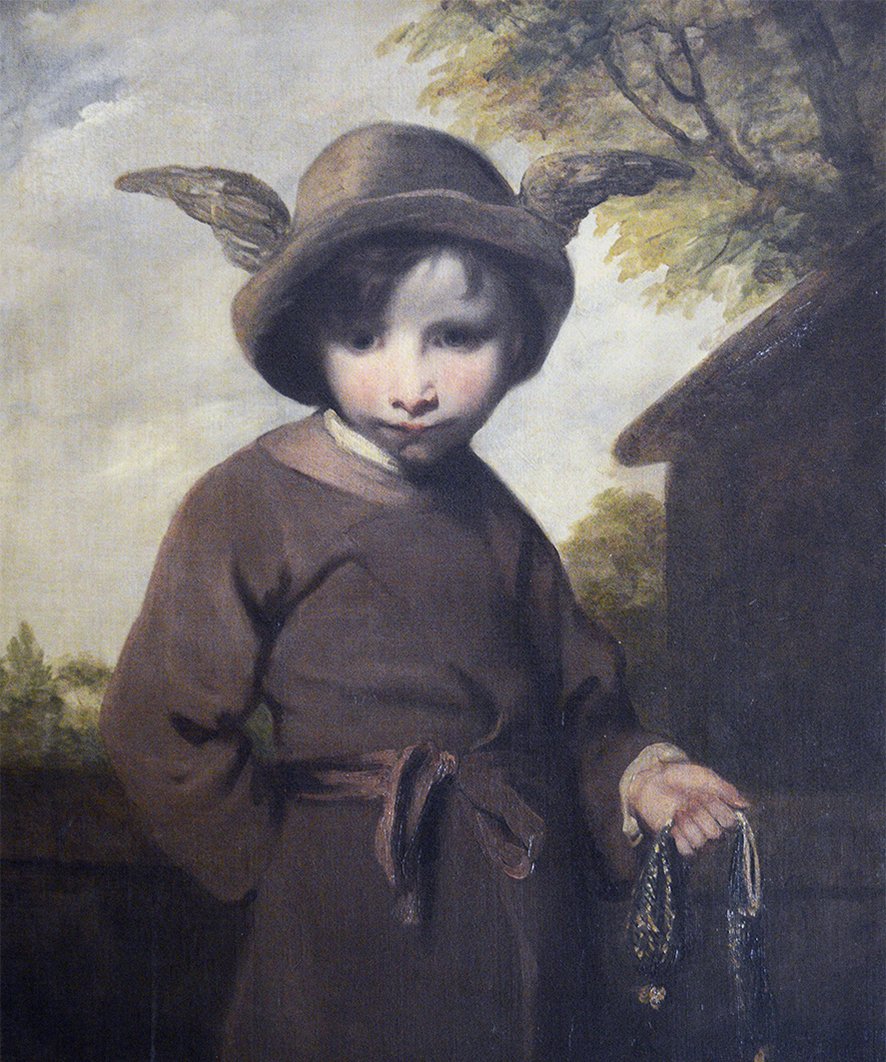
Mercury as a Cut Purse
1723-92
Oil on canvas, believed to be in a contemporary frame. 30 ins by 25 ins
Collection Details
Bought by the 3rd Duke of Dorset, probably in 1778. An entry for this year in the Duke’s account book, preserved at Knole, records the purchase of A Blackguard Mercury for 36 gns. At the same time, he bought A Blackguard Cupid, also for 36 gns. Both pictures were noted as being in London, but by 1817 Bridgman (Historical and Topographical Sketch of Knole, p. 142) lists a Disciple of Mercury by Reynolds in the house. The pictures at Knole descended to Lord Sackville, from whom they were bought by Agnew in 1894; acquired in 1895 by Alexander Henderson, later 1st Lord Faringdon, who subsequently disposed of the Cupid, which is now in the Albright-Knox Art Gallery, Buffalo.
Literature
E Hamilton, Engraved Works of Reynolds, 1884, p. 152; Graves and Cronin, Reynolds, 1899–1901, III, pp. 1173–4; Sir W Armstrong, Reynolds, 1900, p. 241 ; E K Waterhouse, Reynolds, 1941, p. 69.
Exhibition Details
BI, 1817, No. 58; 1823, No. 65; 1840, No. 83; RA, Winter, 1875, No. 6; 1896, No. 18; 25 Park Lane, London, Reynolds, 1937, No. 81; Agnew, English Pictures from National Trust Houses, 1965, No. 13; RA, Reynolds, 1986, No. 93.
Engraved
S. W. Reynolds; John Dean, 1777.
Companion Picture
Cupid as Link Boy (see above).
Background
The picture is dated by Waterhouse 1777 (Dean’s engraving of that year is a terminus ante quem). Leslie and Taylor, Reynolds, 1865, II, p. 175, state that in January 1777 Sir Joshua was at work on his favourite boy model, and this may refer to the child in the present picture and the companion Cupid, a boy who appears in other works by the artist. A number of references in Reynolds’ sitter-book for 1777, Boy and Children, may be relevant. A problem is introduced by a memorandum among Reynolds’ notes of practice for 15 August 1774, quoted by Leslie and Taylor, loc cit, p. 98: ‘Blackguard Mercury and Cupid. Black and Verm: afterwards glazed.’ Leslie and Taylor assume that this refers to the pictures subsequently at Knole; Graves and Cronin, in transcribing it incorrectly, imply that the Mercury was already at Knole at that date (1774). However, the present work is not painted in black and vermilion (as is No. 17, A Beggar Boy, at Buscot, which was also at Knole), but in an unusual, almost watercolour technique. Indeed, as Professor Waterhouse has observed, Reynolds is here adopting a style that recalls Correggio. The question of the date appears to be answered by the artist’s receipt (Knole archives, deposited in the County Record Office, Maidstone, A243/4), which reads: ‘Received Novr. 23rd 1774 from His Grace the Duke of Dorset the sum of one hundred and twenty guineas for three Pictures of Blackguards.’
As David Mannings observes in the catalogue of the 1986 Reynolds exhibition, the Duke, who had a reputation as a rake, evidently relished the sexual innuendo of this picture and its former pendant.
The Trustees of the Faringdon Collection 25.
All rights reserved.
